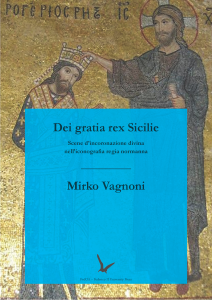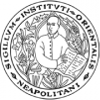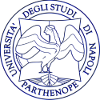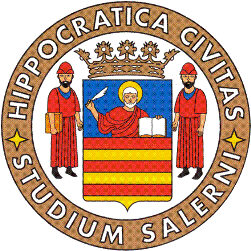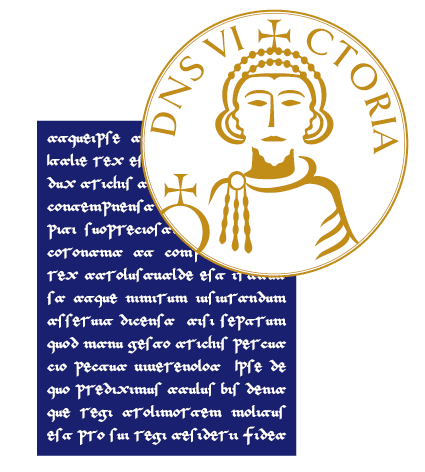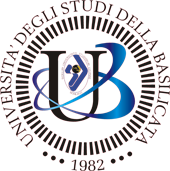Dei gratia rex Sicilie: Scenes of Divine Coronation in the Norman Royal Iconography
Keywords:
Royal Portrait, Royal Iconography, Representation of Power, Kingdom of Sicily, Normans, Roger II, William II, Basilica of St. Nicholas in Bari, Church of St. Mary of the Admiral in Palermo, Cathedral of MonrealeSynopsis
Publisher: FedOA - Federico II University Press.
Series: Regna. Texts and Studies on Institutions, Culture and Memory in Medieval Southern Italy.
Pages: 186.
Language: Italian.
NBN: http://nbn.depositolegale.it/urn:nbn:it:unina-21529.
Abstract: Following Percy Ernst Schramm’s studies on Staatssymbolik, historians have in general considered medieval royal portraits as images mirroring medieval notions of power and political ideology that can legitimate power and strengthen admiration of the king. This interpretation has also had a crucial impact on the analysis of monarchic ideologies and sacral kingship during the Middle Ages. However, the research prompted in Germany on the social praxis of Memoria has opened up new perspectives, by creating an active historiographical debate about the social function and meaning of royal portraits in the liturgical context during the Middle Ages (political/propagandistic vs religious/devotional).
This book aims to foster this debate by analysing the functions and meanings of monarchic pictures characterized by sacral figures and symbols and religious and liturgical contexts in the Norman kingdom of Sicily (1130-1189). In the specific, it investigates three royal portraits: St. Nikolas blesses Roger II in the Basilica of St. Nikolas in Bari; Christ crows Roger II in the Church of St. Mary of the Admiral in Palermo; and Christ crowns William II in the Cathedral of Monreale. By going beyond traditional methodological tactics, its exegesis avoids a ‘one-way’ approach in which artwork is analysed in an ‘autonomous’ manner that extrapolates it from its historical, political and functional context. Moreover, it studies royal portraiture as part of a wider communicative strategy to create a mise-en-scène around the monarchic figure by comparing the iconographic sources and the information provided by written evidence regarding the monarch’s official kingship.
This new analysis of the Norman royal portraits in the religious and liturgical context leads to original perspectives and uses new cues to reformulate the traditional ideas held by historiography in this regard and on political ideologies and royal sacrality.
Table of Contents
Ringraziamenti
Capitolo I. Introduzione
1. Il ritratto regio: una fonte per lo studio della regalità medievale
2. Problemi metodologici ed esegetici della fonte iconografica
3. Il caso dei re normanni di Sicilia
4. Approccio metodologico
Capitolo II. La placchetta della Basilica di San Nicola a Bari
1. Committenza
2. Datazione
3. Destinazione e contesto architettonico
4. Caratteristiche iconografiche
5. Soggetti e temi figurativi
6. Posizionamento e visibilità
7. Funzione e messaggio
8. Contesto storico-politico
9. Contesto ideologico-culturale
Capitolo III. Il mosaico della Chiesa di Santa Maria dell’Ammiraglio a Palermo
1. Committenza
2. Datazione
3. Destinazione e contesto architettonico
4. Caratteristiche iconografiche
5. Soggetti e temi figurativi
6. Posizionamento e visibilità
7. Funzione e messaggio
8. Contesto storico-politico
9. Contesto ideologico-culturale
Capitolo IV. Il mosaico della Cattedrale di Monreale
1. Committenza
2. Datazione
3. Destinazione e contesto architettonico
4. Caratteristiche iconografiche
5. Soggetti e temi figurativi
6. Posizionamento e visibilità
7. Funzione e messaggio
8. Contesto storico-politico
9. Contesto ideologico-culturale
Capitolo V. Conclusioni
Appendice iconografica
Bibliografia
Indici
Indice dei nomi
Indice dei luoghi
Main Reviews:
- “Archivio Storico Italiano”, 176/2 (2018), pp. 405-406.
- “Hortus Artium Medievalium. Journal of the International Research Center for Late Antiquity and Middle Ages”, 24 (2018), pp. 495-496.
- “Archivio Storico per la Calabria e la Lucania”, 84 (2018), pp. 297-298.
- “Le Moyen Âge. Revue d’Histoire et de Philologie”, 124/1 (2018), pp. 203-204.
- “Quellen und Forschungen aus italienischen Archiven und Bibliotheken”, 98 (2018), pp. 536-537.
Downloads
